Finally! Your dream kitchen renovation project is off the ground! You’ve already discussed with your designer how each area should function and feel. Now, you’re ready to roll up your sleeves and dig into the details. As your designer walks you through the cabinetry drawings, you see that the new pantry will be deep enough to fit your KitchenAid mixer but not too deep where soup cans live far past their expiration date. A narrow pullout cabinet to the left of the range keeps spices close at hand while another mirrored on the right clears cooking utensils and oils off the counter. A concealed coffee bar/command center with bi-fold doors helps your family stay organized. Everything is accounted for, and the design looks beautiful.
At this point in the planning process, you’re feeling confident about your decisions. Heck, who knew you had such a knack for this! You’re flying high until your designer or contractor shows you the price of your perfectly planned kitchen, and you almost choke on your Jolly Rancher.
As an NKBA Certified Kitchen Designer, this scene is all too familiar. Clients and designers alike spend months pouring over detailed drawings for a kitchen or bathroom remodel, only to suffer from severe sticker shock when the cabinetry quote comes in. You begin questioning everything: countertops, tile, flooring, window locations.… Suddenly, the project comes to a screeching halt. Where can I cut costs? How can I get my custom designed kitchen at a lower price?
At Liz Walton Home, we believe in educating our clients well so they can make an informed decision about what is right for their home. Like most things, all cabinets are not created equal. Often, the terms “custom cabinetry” and “semi-custom cabinetry” are used interchangeably. As a kitchen and bath professional who specifies cabinets on a daily basis, we are here to shed light on the pros and cons of each!
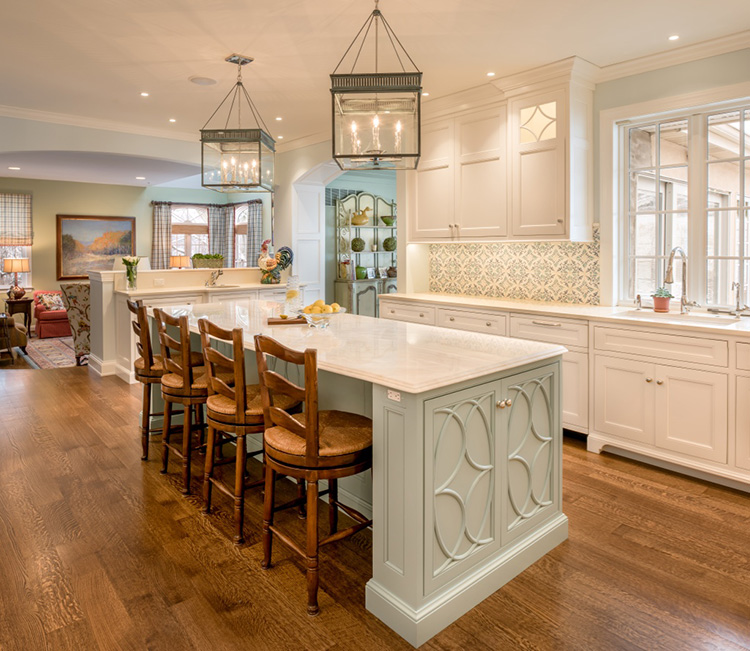
Custom Cabinets
Custom cabinets are built from scratch using solid wood construction – like in the old days! You are able to choose every part of the cabinet, from the wood species and size (down to a 1/16”) to door styles, interior organizational components, and hardware. Anything is possible! Curvilinear mullion details on glass panel doors? No problem! Custom cabinets are best in odd shaped spaces or small spaces in need of the greatest optimization. These cabinets offer the most flexibility with the highest quality materials and craftsmanship. They have unlimited options – and the highest price tag. They also incur longer lead times. However, because of their durability and beauty, clients find these cabinets well worth the investment.
Pros: You get exactly what you want with the best quality craftsmanship and materials
Cons: Expensive and long lead times
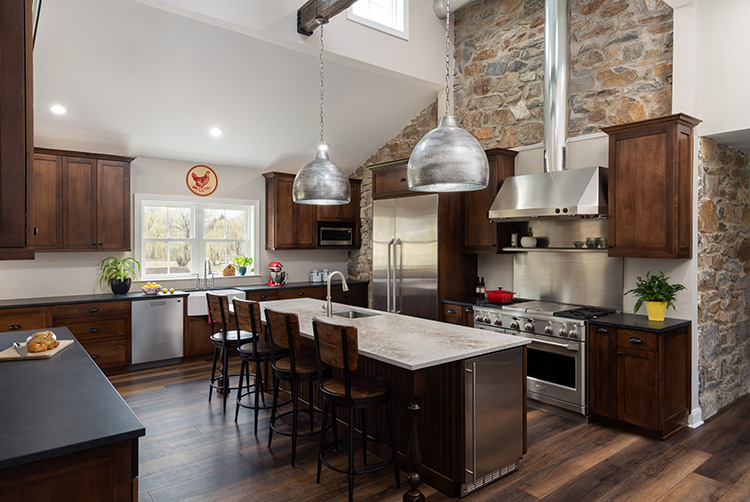
Semi-Custom Cabinets
Typically, semi-custom cabinets are pre-manufactured cabinet boxes with a variety of finishes and door styles. Construction varies, but they’re usually made of a high quality wood or composite material. Sizes are predetermined. They come in increments of 3” in width and height; in-between sizes, like 25-½” wide, are not available. They also have limited options in terms of interior customization. For example, you may not be able to get a utensil organizer or a bifold door for the coffee bar. However, semi-custom cabinets are still a great, budget-friendly option. They also have shorter lead times.
Pros: Lower price point with some customization options
Cons: May not get exactly what you want in terms of size, color, and interior components
Stock Cabinets
Stock cabinets are ready-made and available at your local home improvement store. They come in standard sizes with specific door styles and finishes. Typically, they’re constructed using a wood imposter or composite material like particle board. No modifications are available. What you see is what you get. Don’t be surprised if some come in damaged or your doors fall off in a few years.
Pros: Readily available and very cost effective
Cons: Poor quality, no customization, shorter lifespan
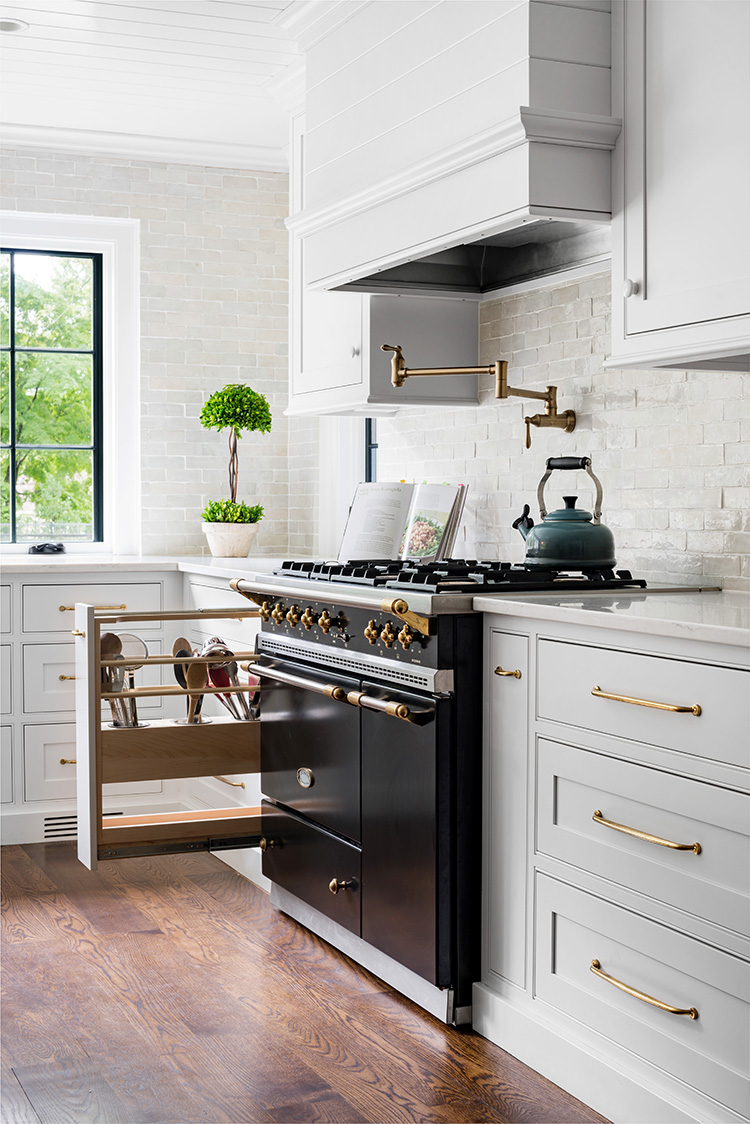
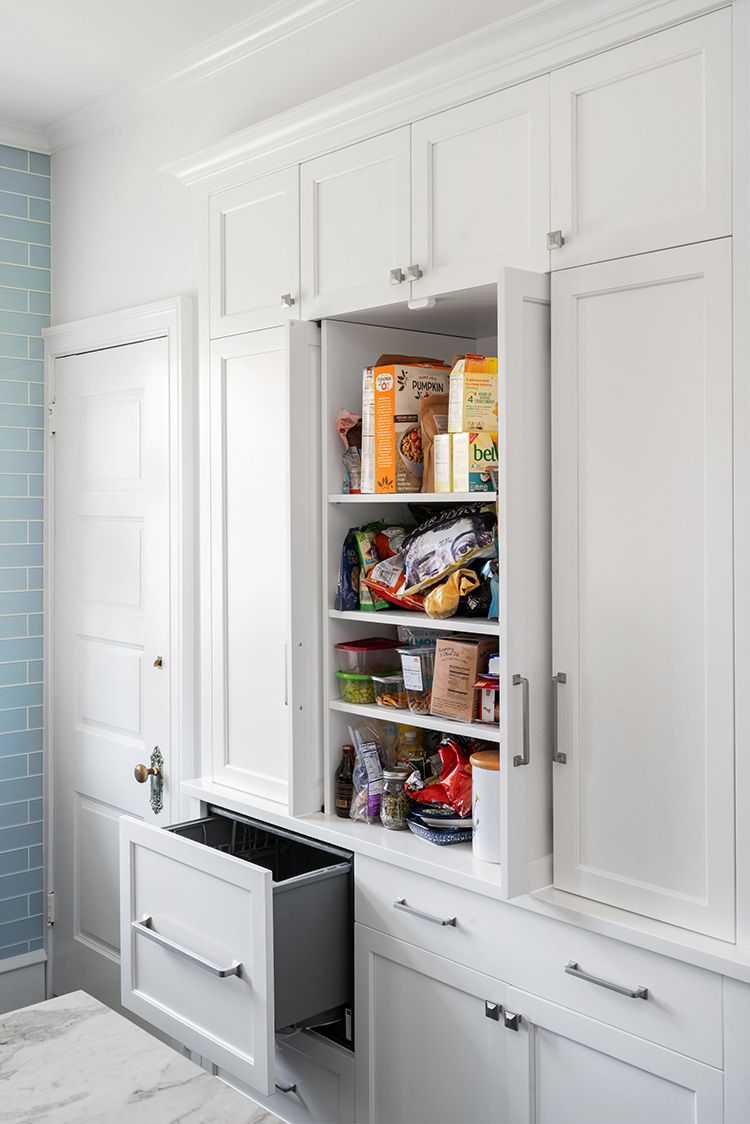
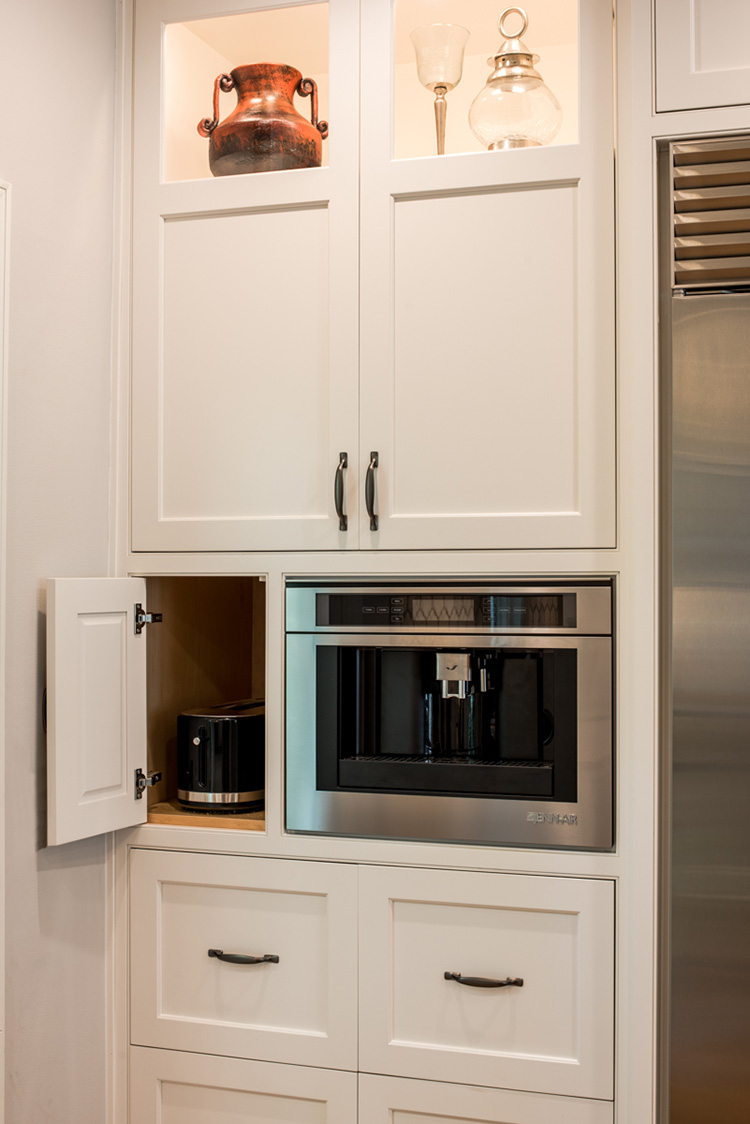
Which cabinets are right for you?
If you are completely redesigning your kitchen and looking for the latest in storage solutions and efficiencies, custom cabinets are the way to go. Custom cabinets are also better suited for high value homes. Semi-custom cabinets are a solid option if you’re looking to replace your existing cabinets and transform the overall look of your kitchen on a budget. (We do not recommend stock cabinets. It is still money spent on an inferior product that you’ll need to shell out again for a replacement.)
Things to consider:
Whether you choose custom or semi-custom, there are other factors at play that will drive the cost of your new cabinets, such as:
- Full Overlay vs. Framed Inset Construction. Read our most popular blog post for more details.
- Door Style. A fancy door style usually comes with a higher price tag than a flat panel or shaker door style.
- Finish. Painted finishes are typically less expensive than stains because the manufacturer will use paint grade material rather than a hardwood with noteworthy grain.
- Molding Details. A three piece crown molding is a beautiful design element but can be a budget buster in terms of cost of materials and labor to install. Other moldings that increase costs are light rails and decorative baseboard moldings.
- Interior Components. Plate racks, stainless steel inserts, and two-tiered drawer systems are really cool and may add value to your life, but they also add hundreds of dollars to the bill. Talk with your design professional to ensure you are selecting your interior cabinetry components appropriately.
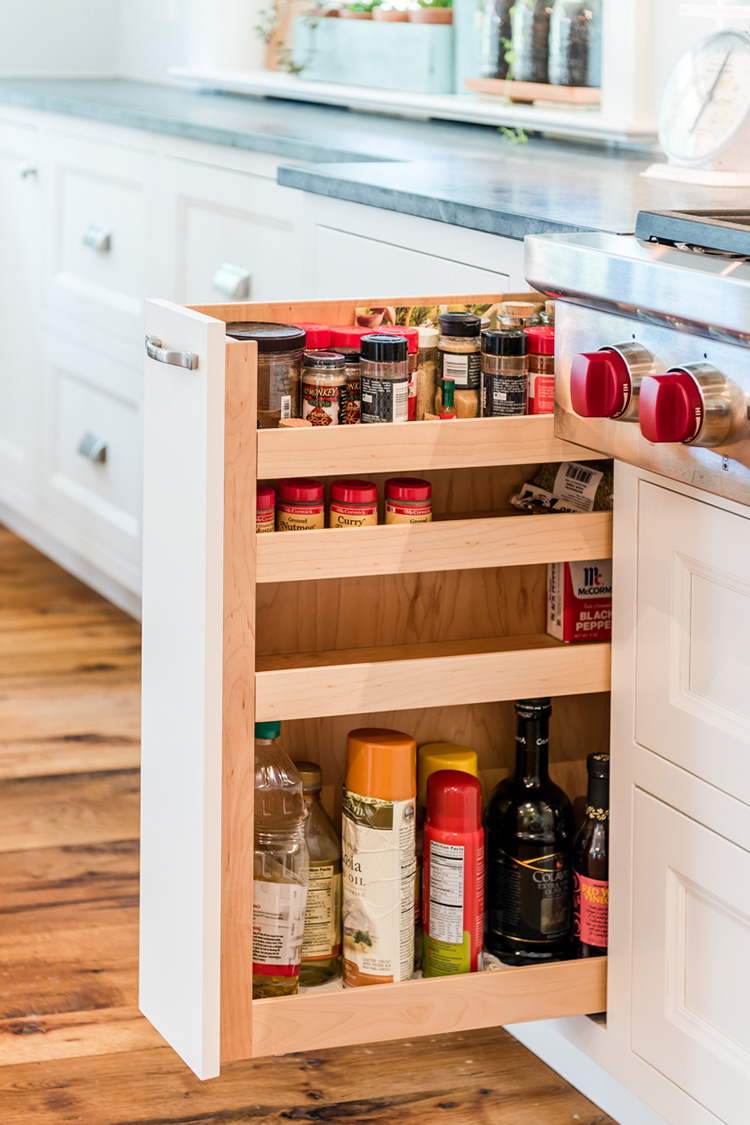
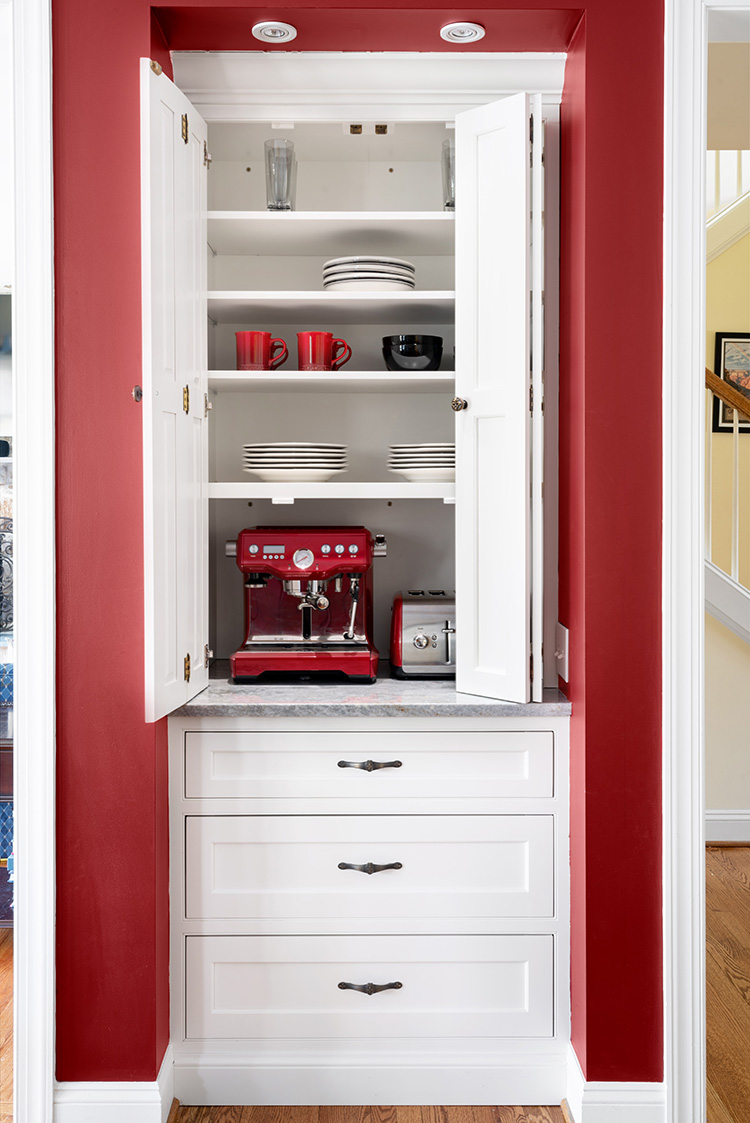
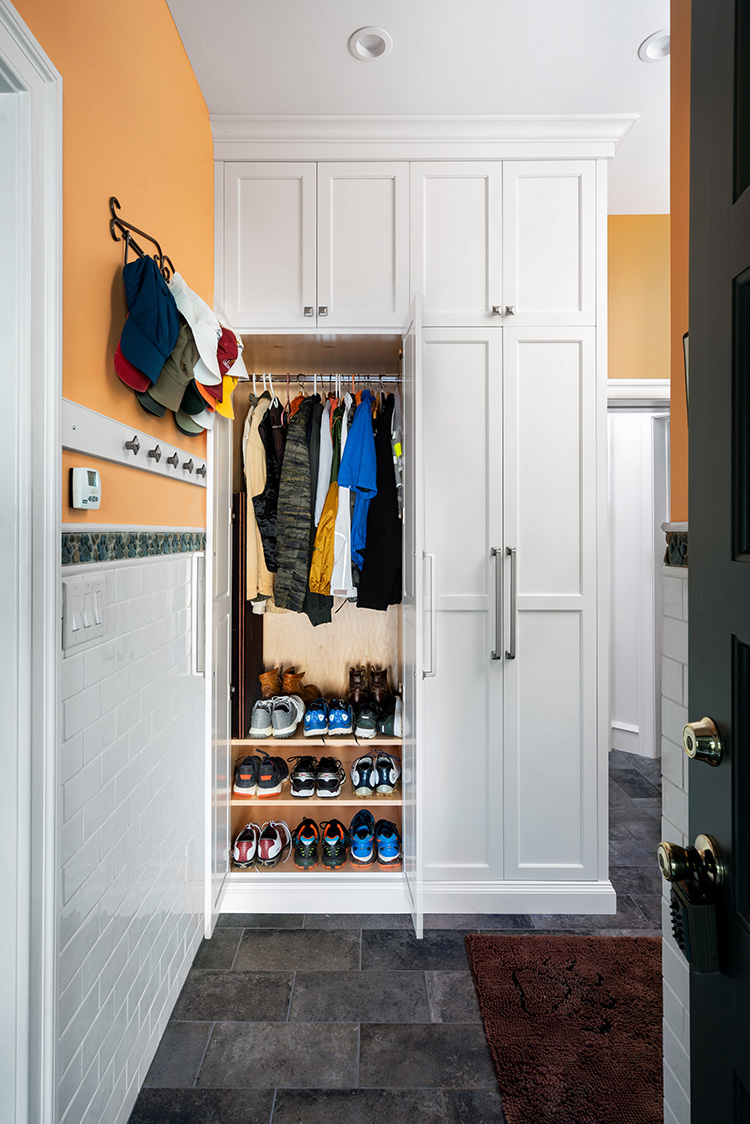
It’s good to have options, but it’s even better when you understand what those options are. Renovating your kitchen or bathroom or installing built-in bedroom closets is exciting, but it’s also a big financial investment. For peace of mind, work with qualified professionals who consider what will add the most value to your home and your life. A note of caution: if you are getting multiple bids on your cabinetry, be sure each shop is quoting the exact same thing. The more detailed your drawings are, the better. Still confused? Give us a call, and we’ll be happy to answer any questions. Happy hunting!


